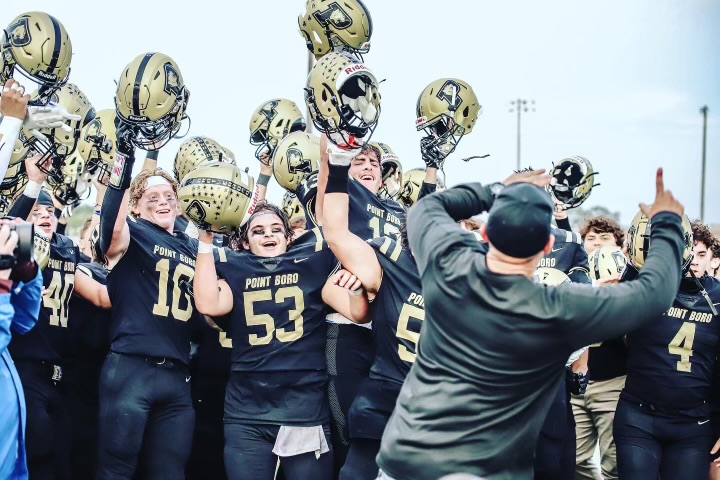Auburn’s Tim Horton discusses the evolution of tailbacks
 The rise in spread offenses has left the impression that running backs are becoming irrelevant in today’s game, but that’s not the case; the position is just evolving.
The rise in spread offenses has left the impression that running backs are becoming irrelevant in today’s game, but that’s not the case; the position is just evolving.
That’s how Auburn running backs coach Tim Horton sees it. He recalls landing his first coaching job at Appalachian State in 1990, a time when running backs were “one-dimensional” players who attacked the line of scrimmage. That changed over time, as coaches began to stretch the field in favor of big-yardage plays, meaning running backs had two choices — adapt or be left behind.
“I would definitely say the position has changed,” Horton said. “Now the quarterback is someone who can run the ball, along with some of these slot receivers on the speed sweep game. You have more diversity with runners on the field.”Only three running backs have been taken in the first round of the NFL draft over the last four seasons and quarterbacks are passing at record numbers. DeMarco Murray, who won the NFL rushing title in 2014 while setting franchise records with the Dallas Cowboys, was cast into free agency instead of landing a new contract from his team. The move prompted questions about how running backs are valued in today’s offenses.
Horton has coached his share of elite running backs throughout his career — Darren McFadden, Tre Mason, Felix Jones, Knile Davis. His book, “Complete Running Back,” was released last summer, offering coaches tips and drills to help their players with ball control, blocking and catching.
Those skills are more important than ever, Horton said. Running backs today must be versatile, meaning pass protection and soft hands are coveted by a majority of coaches. During the 2015 season, 23 percent of Auburn’s passes were completed to running backs, and that could become the new normal as coaches look for ways to create space for their most elite players.
“I’ve always thought there were really four things running backs do: run, catch, block and fake,” Horton said. “When I first started, running was the main emphasis, but we’re seeing the catching and blocking come more and more into play.”

Kris O’Neal, varsity running backs coach at Seven Lakes High School (Texas), noticed a change at the position about 10 years ago. In his program, running backs must have what he calls “functional awareness.” It’s not enough that they can run or block, but he also wants them to be able to read the defense.
“A running back has to tell me what’s going on in the game,” O’Neal said. “We call them a Swiss army knife around here because they have to be able to do everything.”
O’Neal said Oregon’s football team is a prime example of the run-pass option that has become so prevalent in today’s game. The Ducks offense often has two pass and two run options embedded in each play, and that might require the running back to carry the ball, protect the quarterback or even throw a pass. More importantly, they have to recognize the situation and react accordingly.
Horton believes most coaches at the high school level teach running backs the right way, especially in his recruiting area of Florida, Alabama and Georgia. Of course, there’s always room for improvement and one of the skills he would like more refined in prep running backs is their ability to pass protect.
“Not just the technique aspect, but identifying blitzes and offensive line protections,” he said. “It’s not necessarily a deficiency in coaching, but we probably see more of (those responsibilities) at the college level.”
There are also questions of effort. Horton said among the abilities he values most in prospective running backs is their ability to fake, as in sell the play action. Effort can tell Horton a lot about a player because it takes no physical strength to give it.
“I’m an old man and I can still fake because you can do it with effort,” Horton said. “That’s something kids don’t emphasize as much, but it’s something we do at Auburn.”
Talent will always remain the No. 1 factor in determining whether a player makes it to the next level, but that doesn’t mean coaches like Horton don’t look for the intangibles. On the recruiting trail, he’s looking for young running backs with a strong work ethic, putting in time on the practice field and in the weight room.
» MORE: Learn Tim Horton’s Angle Tackling Drill
Horton also wants someone with a true passion for the game. College football requires a significant time commitment that only the most dedicated student-athletes can manage, and if players are not invested in the sport, coaches tend to look elsewhere.
“It’s a little bit like dating,” Horton joked. “You’ve got to both be compatible.”
O’Neal hears a lot of those questions from recruiters. He coached Braeden West, starting tailback at Southern Methodist University, and he said West represents a lot of what college programs are looking for these days — all-purpose athletes.
“If you have a great running back, he can hold a defense and keep the numbers in the box,” he said. “(Programs) want receivers matched up one-on-one, and if you have a stud receiver, the only way to get them one-on-one is if the back is good.”
Horton believes the running back position will continue to evolve and coaches will always covet those with pass catching abilities, but the demand for crafty runners remains high. Throughout his career, Horton has always believed that wins and losses are determined by a team’s abilities to run and defend the run, and he argues that philosophy is still true.
Horton urges running backs to constantly search for ways to improve their abilities. Raw talent can only take players so far, and reaching the next level means taking initiative and discovering how to improve.
“That’s how I look at it when it comes to camps and clinics,” he said. “If there are one or two things a junior high player can take away to help them improve ball security or hand placement, I think it’s worthwhile.”





